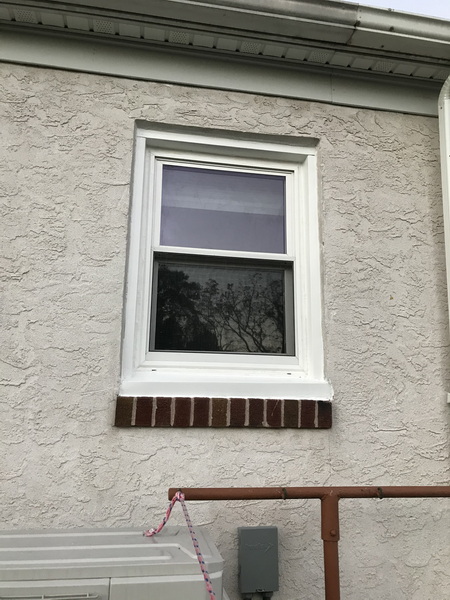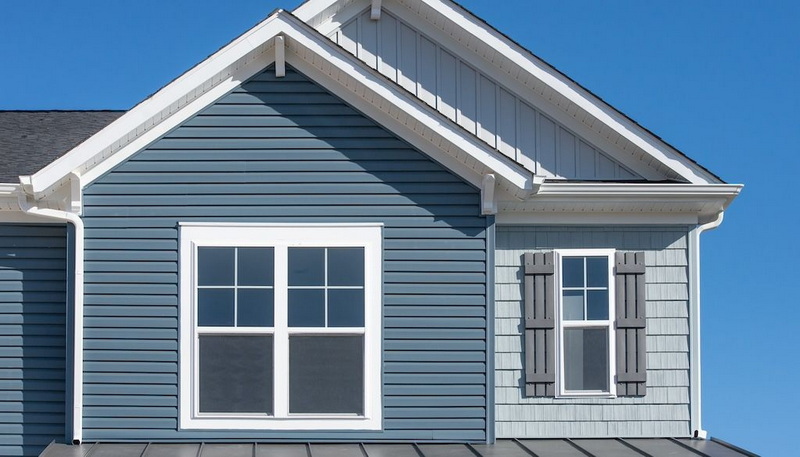English


Views: 222 Author: Dream Publish Time: 2025-01-19 Origin: Site











Content Menu
● Understanding the Legal Implications
● Benefits of Using Aluminum Foil on Windows
● Drawbacks of Using Aluminum Foil
● Best Practices for Using Aluminum Foil
● Alternatives to Aluminum Foil
● Environmental Considerations
● FAQs
>> 1. Is it illegal to put aluminum foil on my windows?
>> 2. Can using aluminum foil damage my windows?
>> 3. How do I remove residue left by aluminum foil?
>> 4. Will my window warranty be voided if I use aluminum foil?
>> 5. What are some alternatives to aluminum foil for blocking sunlight?
Using aluminum foil on windows has become a popular DIY method for reducing heat and light in homes, especially during hot summer months. However, many homeowners and renters may wonder if this practice is legal or if it could lead to potential issues with property management and local regulations. This article explores the legality of using aluminum foil on windows, its benefits and drawbacks, and answers some frequently asked questions about this unconventional method.

Local Regulations and Homeowners Associations (HOAs)
The legality of using aluminum foil on windows can vary significantly based on local laws and homeowners association rules. While there are generally no specific laws prohibiting the use of aluminum foil on windows, some HOAs may have strict guidelines regarding exterior aesthetics.
- HOA Rules: Many homeowners associations enforce rules to maintain the visual appeal of neighborhoods. Covering windows with aluminum foil might be seen as unsightly, leading to potential fines or requests to remove it.
- Local Building Codes: Some municipalities have building codes that dictate what materials can be used for window treatments. Although aluminum foil is not explicitly mentioned in most codes, it's essential to check with local authorities to ensure compliance.
Using aluminum foil as a window treatment offers several advantages:
- Heat Reflection: Aluminum foil is highly reflective, which helps bounce sunlight away from the window. This can significantly reduce indoor temperatures during hot weather, making it a cost-effective alternative to air conditioning.
- Energy Efficiency: By blocking heat from entering the home, aluminum foil can lower energy bills by reducing the need for cooling systems. Studies have shown that reflective materials can reduce indoor temperatures by up to 20 degrees Fahrenheit.
- Light Control: Foil effectively blocks light, creating a dark environment that can be beneficial for sleeping or watching movies. This feature is particularly useful for those who work night shifts or have young children who require consistent sleep schedules.
- Privacy: Covering windows with foil can prevent outsiders from seeing inside, enhancing privacy without the need for expensive window treatments. This is especially beneficial in urban areas where homes are close together.
- UV Protection: Aluminum foil can block harmful UV rays that cause fading of furniture and flooring. This simple solution helps extend the life of your belongings and reduces the risk of skin damage from prolonged exposure to sunlight.
- Cost-Effective Solution: Compared to specialized window films or shades, aluminum foil is inexpensive and readily available in most households. A roll of aluminum foil typically costs less than $5, making it an accessible option for many.
- Temporary Solution: In emergencies, such as power outages or natural disasters, aluminum foil can serve as a quick fix for insulating windows against extreme temperatures. Its lightweight nature makes it easy to apply and remove as needed.
Despite its benefits, there are several drawbacks to consider:
- Aesthetic Concerns: Many people find aluminum foil unattractive. Covering windows with foil can give a home an unkempt appearance, which may not align with neighborhood standards. This concern is particularly relevant for those living in communities with strict aesthetic guidelines.
- Potential Damage to Windows: If applied incorrectly, aluminum foil can trap heat against window panes, potentially causing thermal stress that leads to cracks or breaks in double-glazed windows. This is particularly concerning for modern insulated windows that are not designed to handle such temperature fluctuations.
- Residue Issues: When removed, aluminum foil can leave behind adhesive residue that may be difficult to clean off glass surfaces. This residue can require special cleaning agents or techniques to remove completely without scratching the glass.
- Voiding Warranties: Many window manufacturers state that using unapproved materials like aluminum foil can void warranties. This is especially true for newer windows designed with specific coatings that could be damaged by heat buildup caused by reflective materials.
If you decide to use aluminum foil on your windows, consider these best practices:
- Apply Outside: For maximum effectiveness and to avoid damaging your windows, apply aluminum foil to the outside of the glass rather than the inside. This prevents heat from entering the home in the first place.
- Use Cardboard Backing: To avoid direct contact between the foil and glass—and thus reduce the risk of damage—consider placing a piece of cardboard behind the foil. This acts as an insulator and helps distribute heat more evenly.
- Regular Maintenance: Check periodically for any signs of damage or residue buildup. Remove and replace the foil as needed to maintain both effectiveness and aesthetics.

The effectiveness of aluminum foil in blocking heat lies in its reflective properties. When sunlight strikes a surface, it can either be absorbed or reflected. Aluminum foil reflects a significant portion of this sunlight away from your home.
1. Heat Transfer Reduction: When applied correctly, aluminum foil minimizes heat transfer through conduction and radiation. It acts as a barrier that prevents solar radiation from entering your living space.
2. Thermal Insulation Enhancement: While not primarily an insulator, when used alongside other insulation methods (like double-glazing), aluminum foil can enhance overall thermal performance by reflecting radiant heat back into the room during winter months.
3. Light Diffusion: The shiny surface of aluminum also diffuses light entering through windows while still allowing some natural light into your home.
If you are concerned about aesthetics or potential damage from using aluminum foil on your windows, several alternatives provide similar benefits:
- Window Films: Specialized reflective window films are designed specifically for blocking heat while allowing light through. These films often provide UV protection and come in various shades and designs that enhance aesthetics without compromising functionality.
- Blackout Curtains: Heavy drapes or blackout curtains effectively block light and insulate against heat loss during winter months. They come in various styles that can complement your home decor better than aluminum foil.
- Reflective Shades: These shades serve as both insulation and sun blockers without the downsides associated with using aluminum foil. They are available in various materials and colors to suit different tastes.
- Plantation Shutters: These wooden or faux wood shutters provide excellent insulation while adding a classic aesthetic appeal to your home. They allow you to control light levels while maintaining privacy effectively.
When choosing how to manage sunlight exposure in your home, it's important also to consider environmental impacts:
1. Sustainability of Materials: While aluminum itself is recyclable, frequent use of disposable products like aluminum foil contributes to waste accumulation over time. Exploring more sustainable options like solar shades made from recycled materials could be beneficial both environmentally and aesthetically.
2. Energy Consumption: Reducing reliance on air conditioning by effectively managing indoor temperatures through reflective surfaces helps lower overall energy consumption—contributing positively towards reducing carbon footprints associated with energy production!
3. Long-Term Solutions vs Short-Term Fixes: Investing in permanent solutions such as energy-efficient windows or professionally installed films may yield better long-term results compared with temporary measures like foiling up windows every summer season!
In summary, while using aluminum foil on windows is generally not illegal, it is essential to consider local regulations and HOA rules before proceeding. The method offers several benefits in terms of heat reduction and energy efficiency but also comes with potential drawbacks related to aesthetics and window damage. If done correctly and thoughtfully, it can serve as an effective temporary solution for keeping your home cool while being mindful of environmental impacts associated with each choice made along this journey!

No, there are typically no laws against using aluminum foil on windows; however, homeowners associations may have rules regarding exterior appearances.
Yes, if applied incorrectly or left on too long, aluminum foil can cause thermal stress in double-glazed or insulated windows, potentially leading to cracks.
Residue can often be removed using vinegar or commercial adhesive removers; however, be cautious as some products may scratch glass.
Many manufacturers state that using unapproved materials like aluminum foil can void warranties due to potential damage caused by thermal stress.
Consider blackout curtains or reflective window films as more aesthetically pleasing alternatives that still provide effective light control without the risks associated with aluminum foil.
[1] https://www.reddit.com/r/mississauga/comments/tcke69/is_there_a_bylaw_against_putting_aluminum_foil_on/
[2] https://www.reddit.com/r/DIY/comments/14xf1nx/would_it_be_bad_if_i_covered_my_window_with/
[3] https://www.reddit.com/r/NoStupidQuestions/comments/rzd3xo/windows_insulation_with_aluminium_foil/
[4] https://www.housedigest.com/1360647/aluminum-foil-lining-windows-mistake/
[5] https://www.housedigest.com/1616548/cool-home-summer-aluminum-foil-on-windows-damage-void-warranty/
[6] https://www.mrlandlord.com/landlordforum/display.php?id=13757054
[7] https://www.youtube.com/watch?v=mdRHPtoarAU
[8] https://www.shutterstock.com/image-photo/window-insulated-aluminium-foil-protect-house-1152303674
[9] https://neothermalinsulation.com/blog/aluminum-foil-insulation/
[10] https://www.tomsguide.com/opinion/i-just-beat-the-heat-with-a-dollar2-roll-of-aluminum-foil-heres-how
[11] https://www.gov.uk/tinted-vehicle-window-rules
[12] https://www.chaluminium.com/top-8-functions-of-aluminum-foil-on-windows
[13] https://chemistry.stackexchange.com/questions/104753/aluminium-foil-on-windows-what-is-the-residue-and-how-to-remove-it
[14] https://www.facebook.com/groups/221083762581351/posts/571064630916594/
[15] https://www.tiktok.com/discover/how-to-cover-your-window-with-aluminium-foil
[16] https://www.gettyimages.hk/%E5%9C%96%E7%89%87/window-foils?page=4
[17] https://www.tiktok.com/@aliciaparga1/video/7140407201281215787
[18] https://www.youtube.com/watch?v=pCg0XiLrrTs
[19] https://www.tiktok.com/discover/aluminum-foil-on-windows-to-block-sun
[20] https://www.tiktok.com/discover/covering-your-window-with-aluminum-foil
[21] https://www.pinterest.com/pin/aluminum-foil-on-windows-for-energy-efficiency--828943875188314984/
[22] https://www.pinterest.com/pin/aluminium-foil-stained-glass-painting-sparkling-buds--113927065556094408/
[23] https://www.facebook.com/YoungAndHandsomeMY/videos/sunfoil-diy-in-5-minutes/1756115548053382/
[24] https://www.tiktok.com/discover/hiw-to-setup-tin-foil-on-your-window
[25] https://www.housedigest.com/1360647/aluminum-foil-lining-windows-mistake/
[26] https://diy.stackexchange.com/questions/151160/how-can-i-remove-residue-left-after-removing-aluminum-foil-from-my-windows
[27] https://ezsnapdirect.com/how-to-choose-between-foil-insulation-and-shade-screen/
[28] https://www.vaia.com/en-us/textbooks/chemistry/principles-of-instrumental-analysis-7th/atomic-x-ray-spectrometry/q-127-aluminum-is-to-be-used-as-windows-for-a-cell-for-x-ray/
[29] https://www.foilboard.com.au/faqs/
[30] https://www.superfoil.co.uk/about-us/faq/
[31] https://www.fuelly.com/forums/f22/aluminum-foil-on-windows-9051.html
[32] https://ybsinsulation.com/frequently-asked-questions/
[33] https://www.ecofoil.com/pages/frequently-asked-questions
[34] https://www.reddit.com/r/DIY/comments/14xf1nx/would_it_be_bad_if_i_covered_my_window_with/
[35] https://www.136home.com/blog/diy-window-insulation
[36] https://www.tiktok.com/discover/tin-foil-on-your-windows
[37] https://boards.straightdope.com/t/aluminum-foil-breaking-windows/585096
Stainless Steel Grades 201 Vs 304: Cost Vs Performance Breakdown
316L Vs 316 Stainless Steel Grades: Which Is Better for Corrosion Resistance?
Comparing Austenitic Vs Martensitic Stainless Steel Grades: What You Need To Know?
Stainless Steel 430 Vs 304: Key Differences Explained for Manufacturers
304 Vs 316 Stainless Steel Grades: Which One Suits Your Project Best?
Stainless Steel Pipes Vs Galvanized Pipes: Durability And Cost Analysis
Comparing Stainless Steel Pipes And PVC Pipes: What You Need To Know?
Stainless Steel Pipes Vs Copper Pipes: Pros And Cons for Industrial Use
Seamless Stainless Steel Pipes Vs Welded Pipes: Key Differences Explained
Stainless Steel Pipes Vs Carbon Steel Pipes: Which One Suits Your Project?
